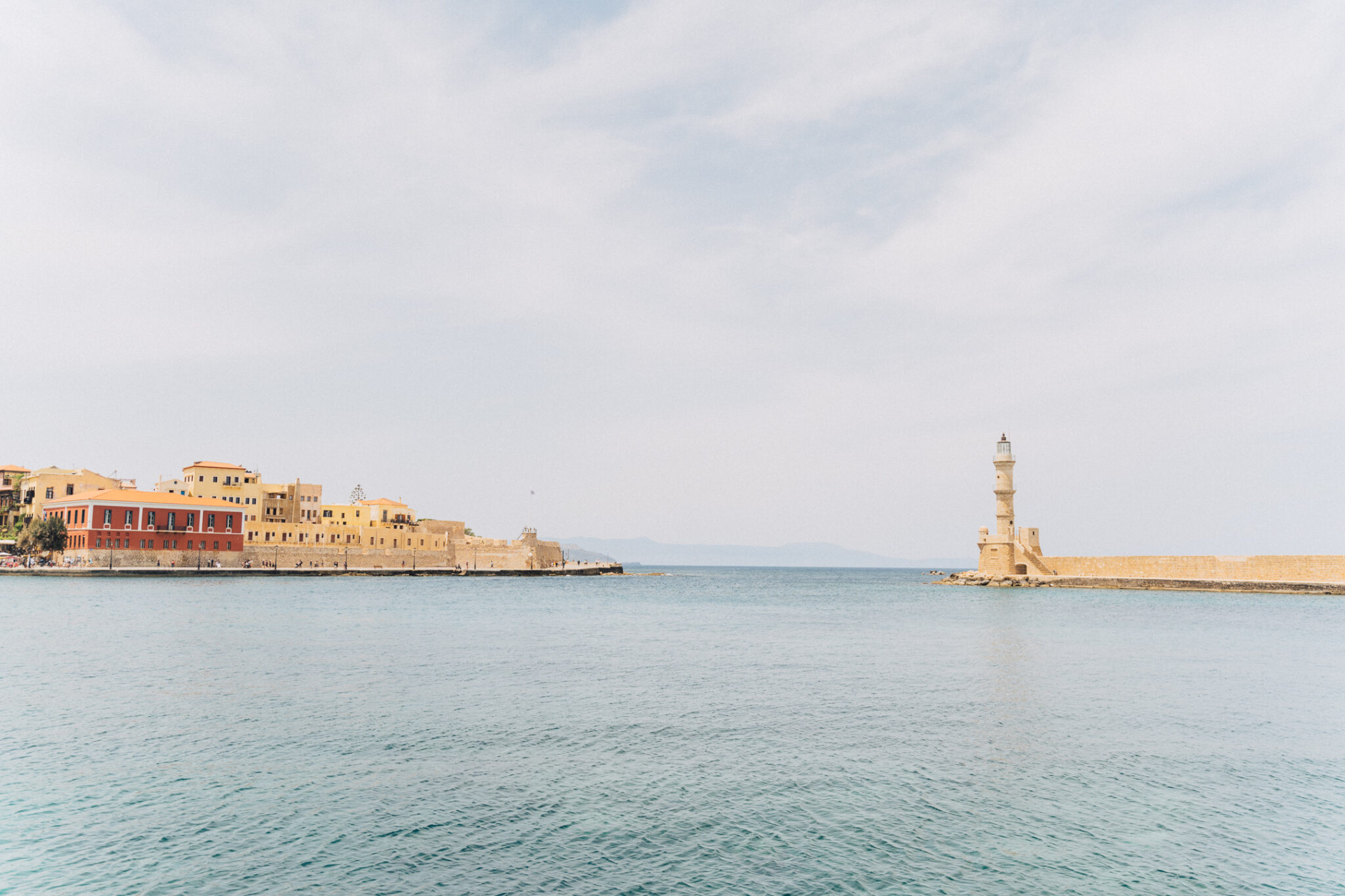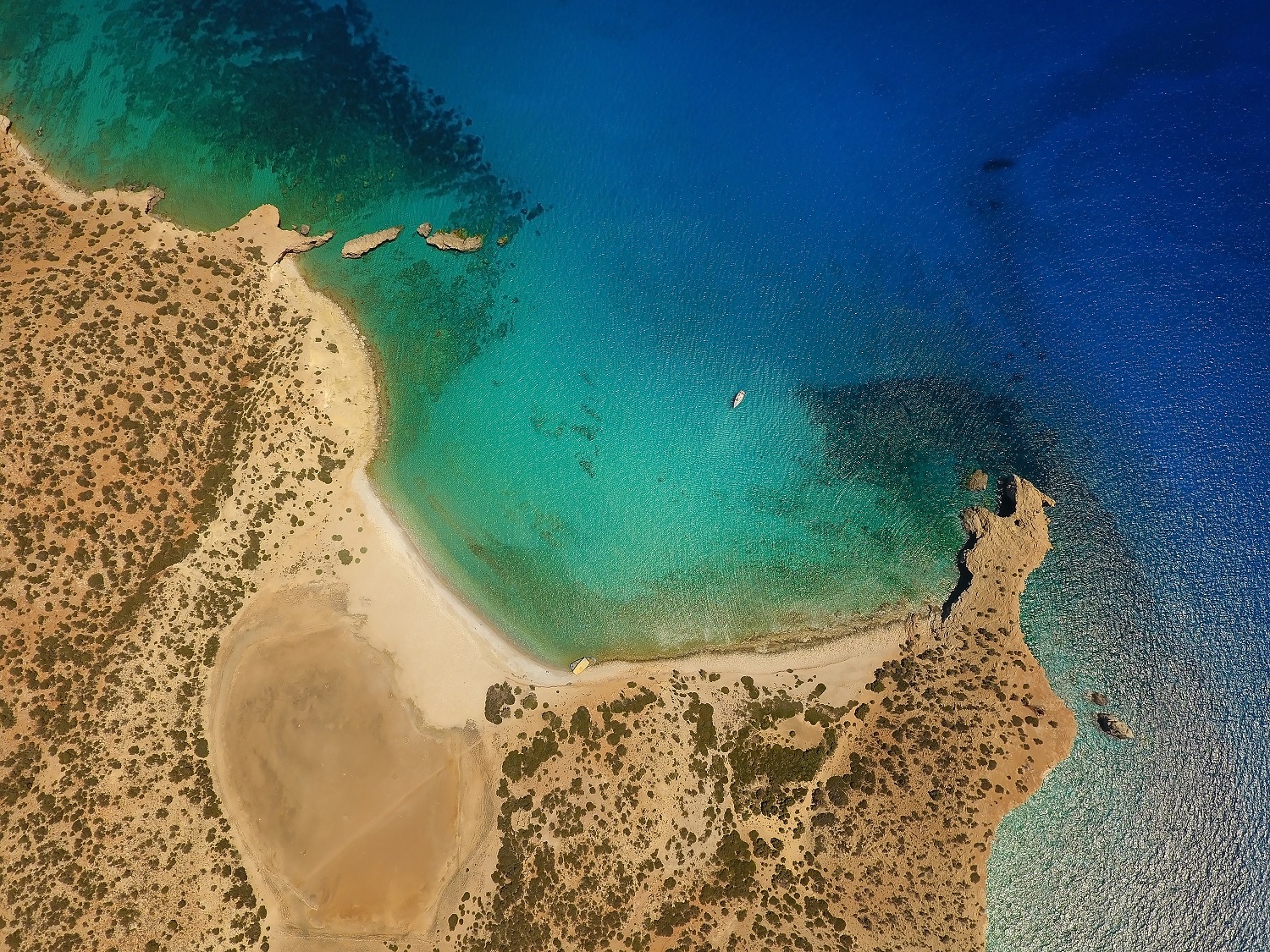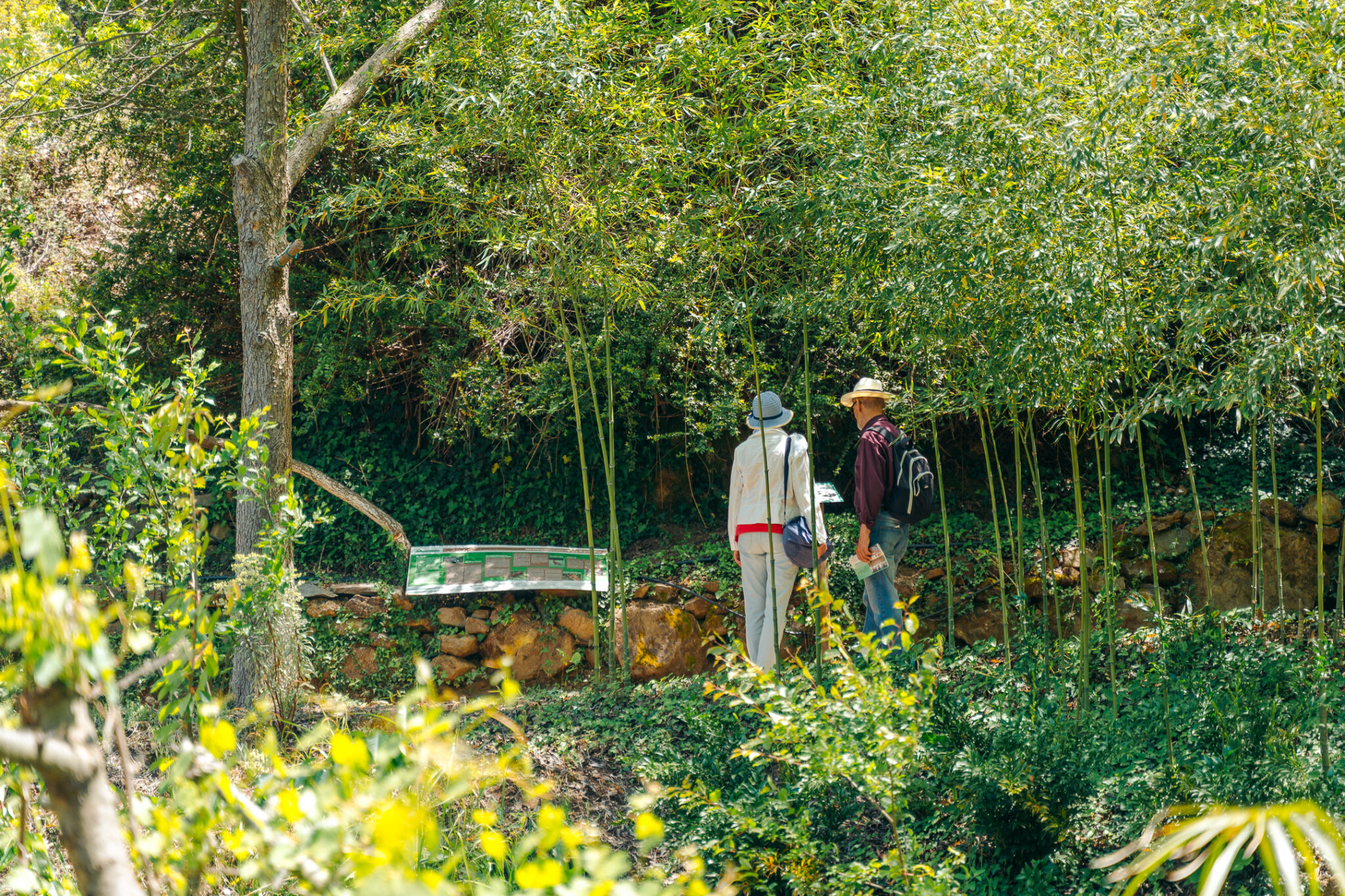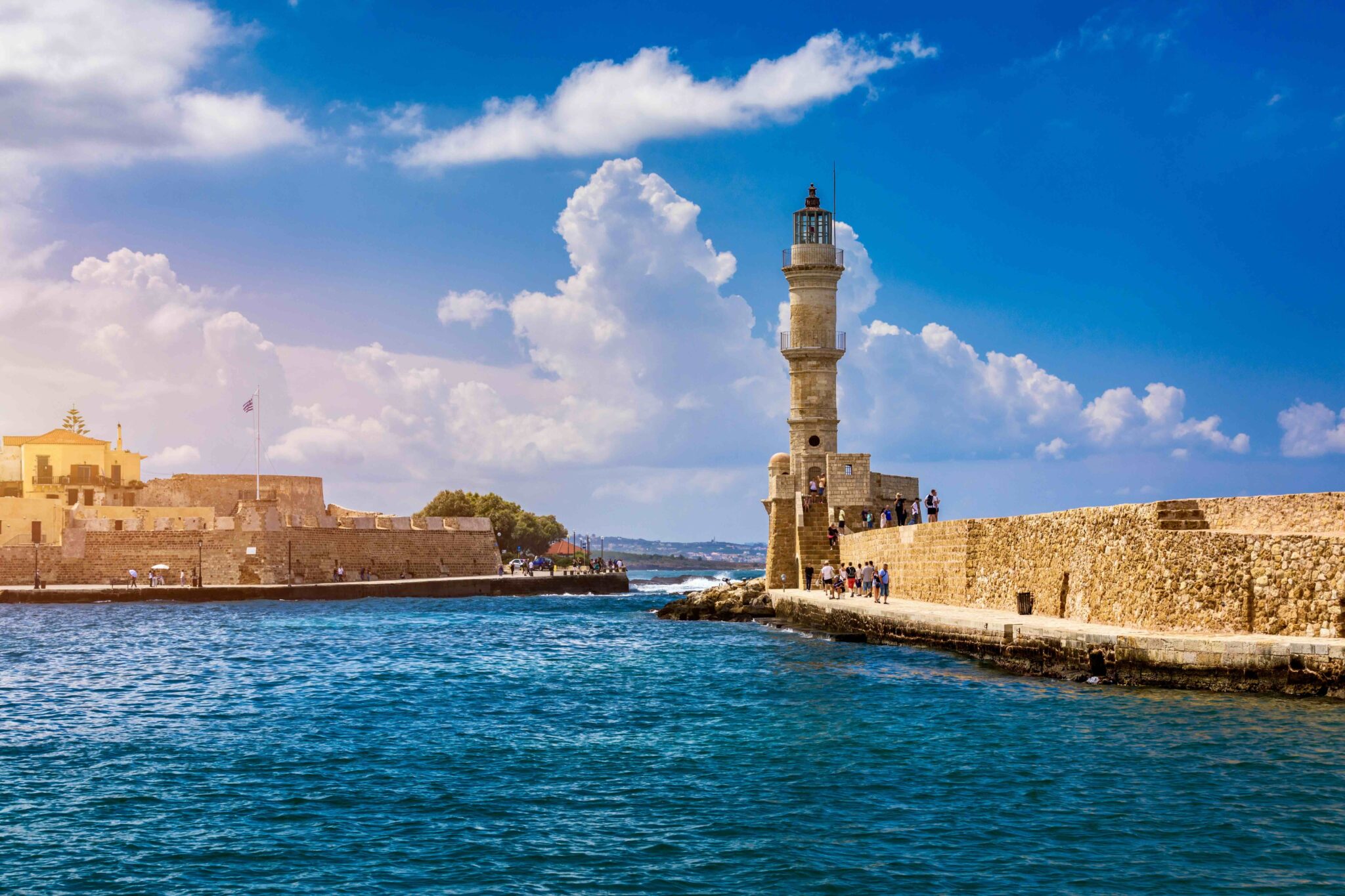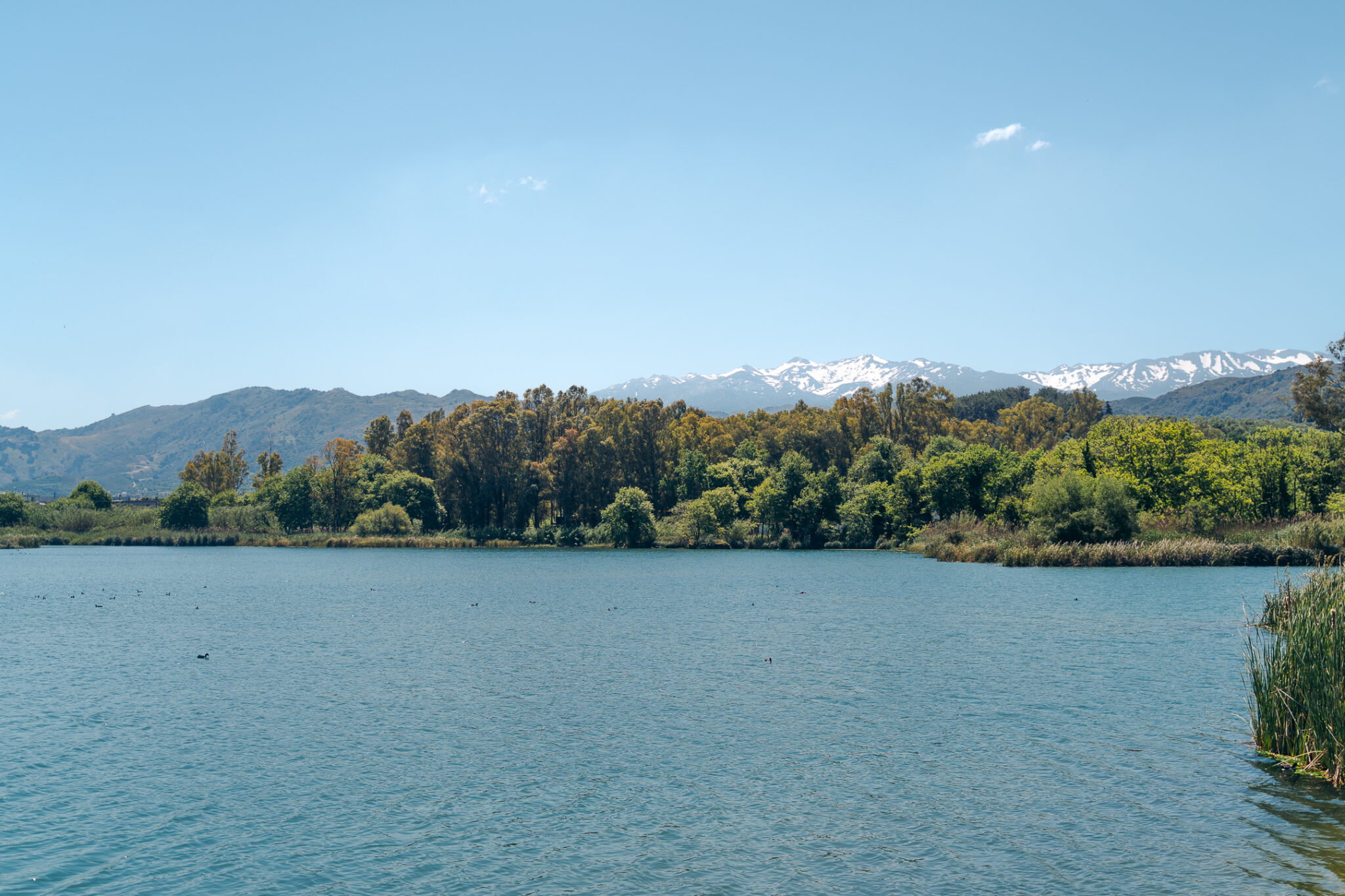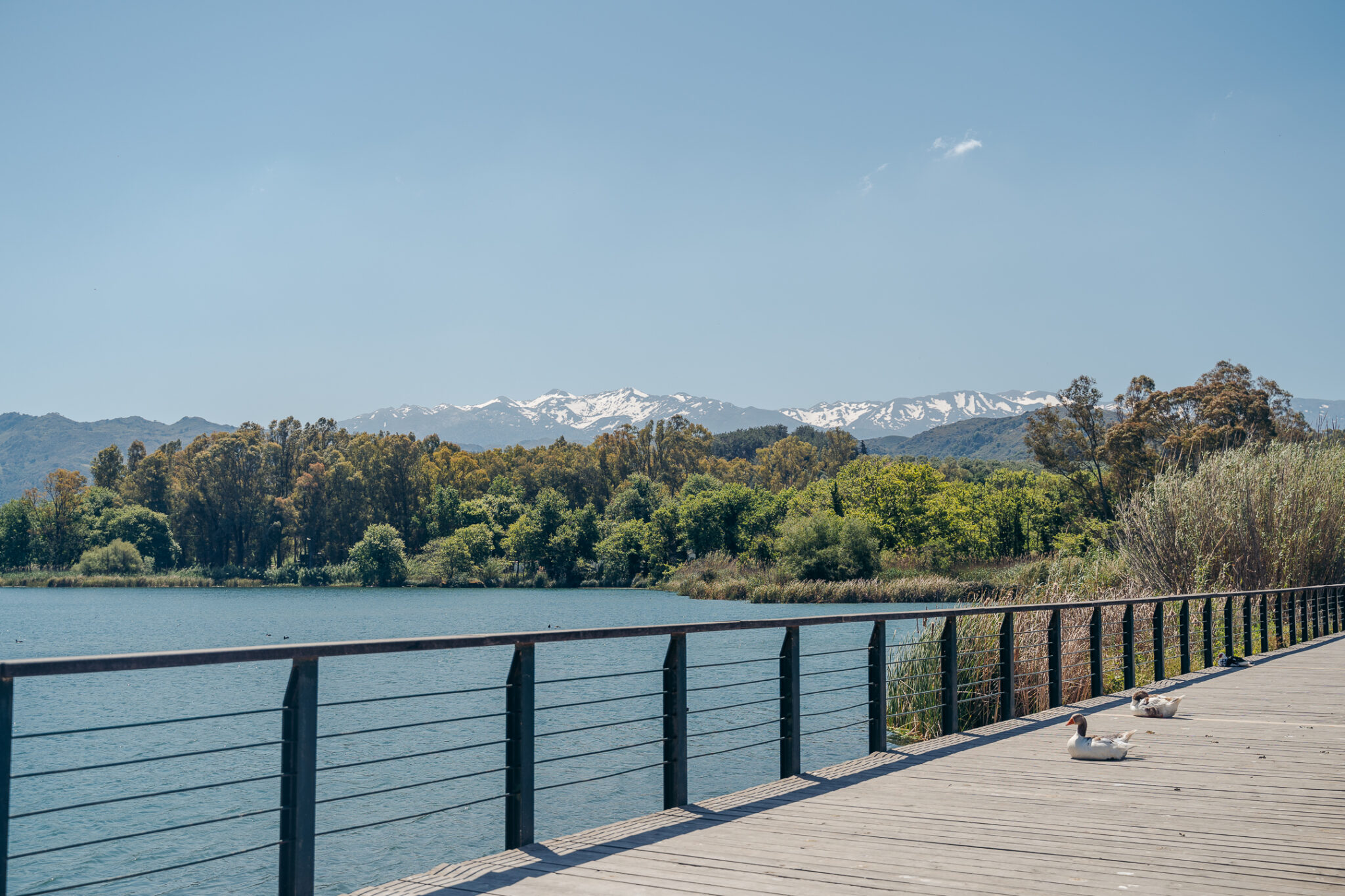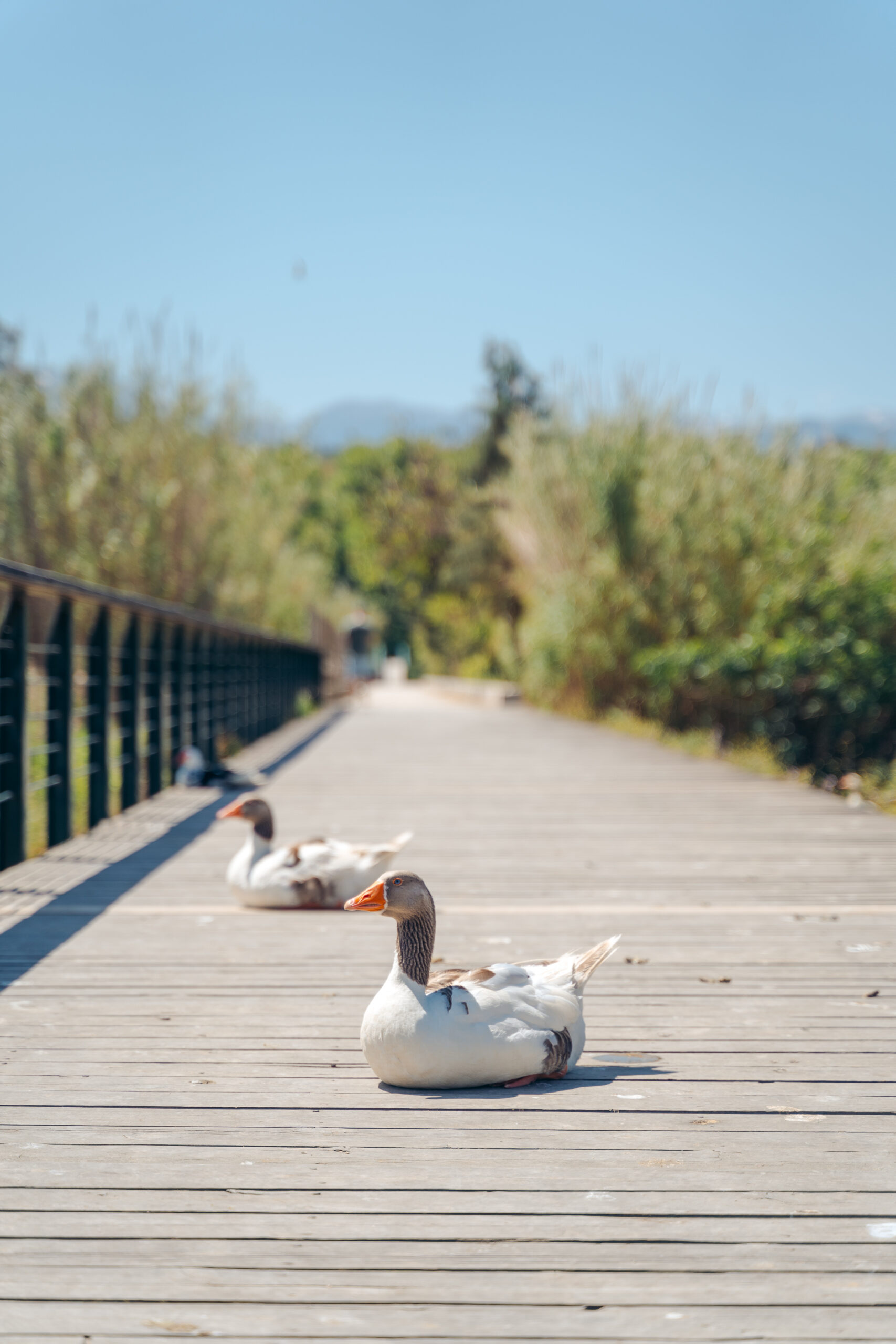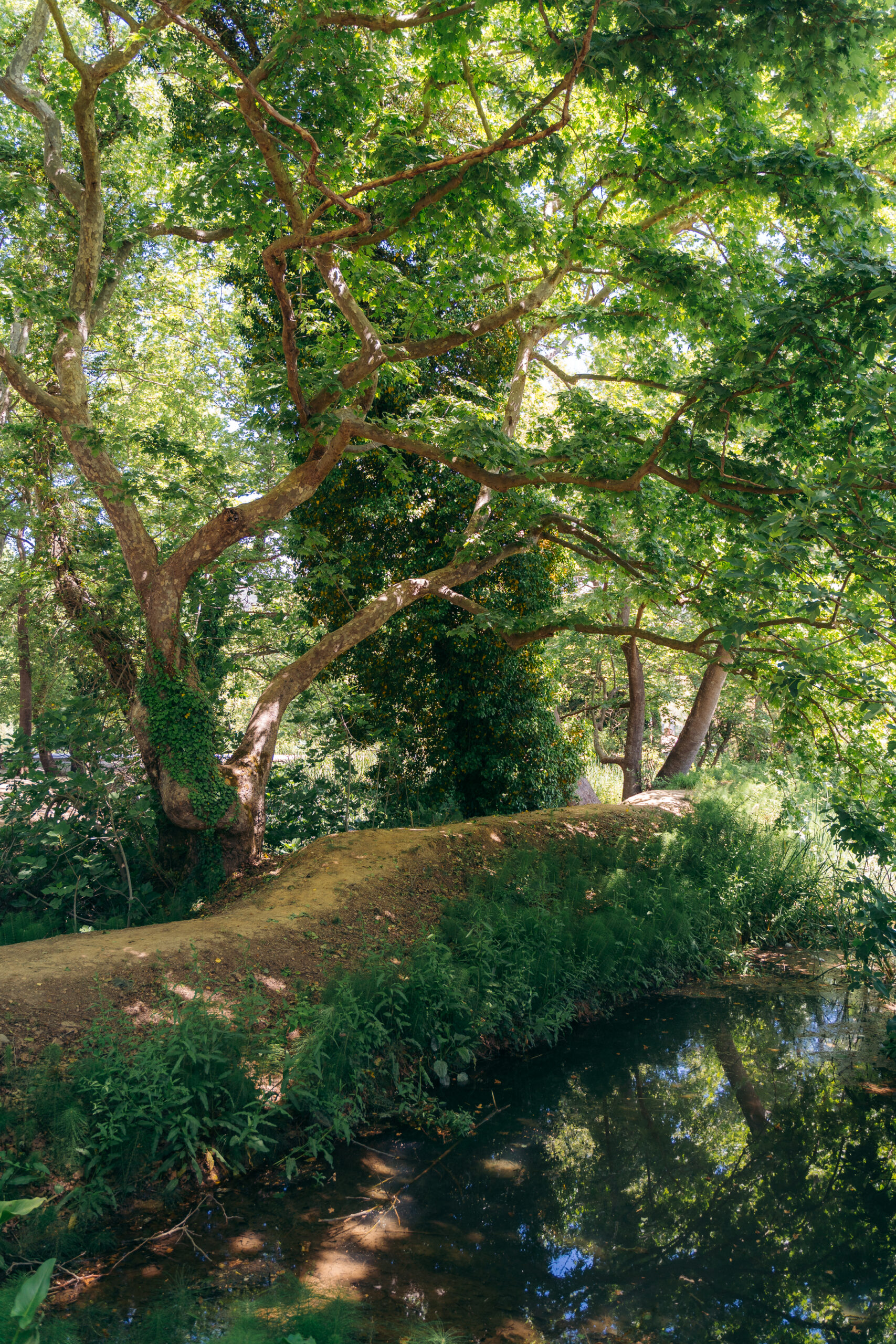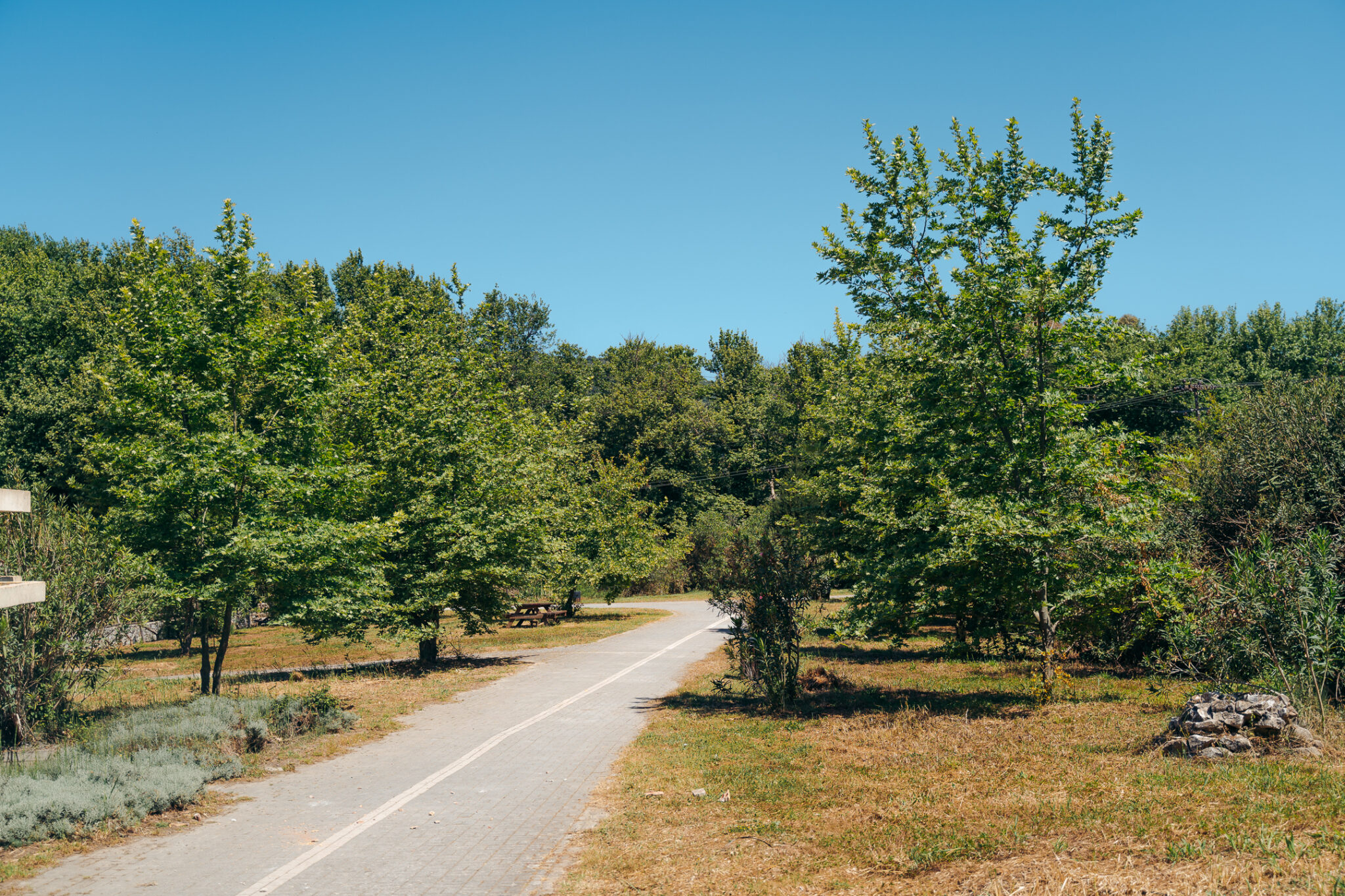Natura 2000 network is an oasis of serenity and natural beauty situated just 9 km west of Chania, in the Agia region. The Agia region is considered one of the wettest in Crete as it is located in a natural basin with water gushing from its soil, mainly springs, fed by the water table of the wider area and the White Mountains (Lefka Ori). Prior to 1927, the area was a swamp that gave way to Lake Agia, a small 45-hectare man-made lake close to the Fasas Valley, at the natural flow of the Xekolomenos tributary, which originates east of the valley and is an import source of the Keritis river. A multitude of springs offering water of excellent quality stemming from underground karst aquifers of the White Mountains are clustered in the area.
The Agia area is also home to flora that create appropriate conditions for the survival and wintering of important populations, mainly bird species. Over 130 plant species and a significant variety of habitats, such as aquatic and riparian plant communities, have been recorded in the lake area. They provide valuable habitats for fauna such as sycamores, reeds, willows and other woody species whose clusters are breeding and resting grounds for birds. The man-made lake and riparian areas are also an important wetland that serves as a stopover for migratory birds travelling towards Africa and as a wintering ground for species arriving from the north.
The man-made Agia lake, along with a small hydropower facility launched in 1928, constitute a combined technological project of the 20th century that emerged as a pioneering achievement for its time. It stood as a shining example in terms of water utilisation and renewable energy in Greece. Nowadays, the Regional Development Company of Crete SA has taken on the task of using the former hydropower facility’s old building as an exhibition space that is open to the public. Educational and cultural programmes are offered for all ages.
Unlike Lake Kournas, a natural freshwater lake in the Chania region, Lake Agia’s water is ideal for water supply to Chania, the city, as well as crops in the surrounding area. Large orchards and avocado crops are located in the area. Also, the lake is surrounded by numerous picturesque villages off the beaten track. They represent ideal stops for a road trip in the wider area. These villages include Alikianos, Fournes, Skines, Kyrtomado, Skordalou, Omalo, Meskla and Theriso.
Exploring the area reveals beautiful and relaxing spots. Visitors may take the path running around the lake, which offers the opportunity to marvel at features making the location special, such as the greenery, trails and overall imagery. Find your favourite spot and take photographs. Observe the birds as they fly low over the lake. Enjoy the wondrous nature and the area’s ecosystem.
Look around at the small hydropower facility and learn about the history of electricity supply in Chania and the entire country’s electrification. Take your mind back to the days when hard work was required at lignite mines for light to be produced. Find out about how water was utilised to generate electricity at the small hydropower station. This will offer a better understanding of this pioneering project of the previous century, still impressive today in terms of concept, architecture and technology. Take a look around the exterior exhibition space to learn about the facility’s emission-free, renewable energy production.
Beyond the bridge at Lake Agia, a trail running around the lake takes approximately one hour to walk – at a leisurely, relaxed pace. This route, largely unknown, even among locals, is lovely and offers a sense of romance. Covering it will reward you. After all, there is no better way to become acquainted with a place than by walking.
At the same time, two sophisticated café-restaurants with stunning views of the lake operate in the area. The location takes you on a captivating journey, as it is cut off from the hustle and bustle of traffic and background noise. After a walk on the lake the options are many and come to meet every mood and need. Traditional attentive tastes, quality ingredients and excellent service create nice conditions and easily turn a simple walk into a unique experience.
Read also:
Greek wines – Hania: Climate, wineries, varieties, labels
Amari: A lush Cretan region with picturesque villages



